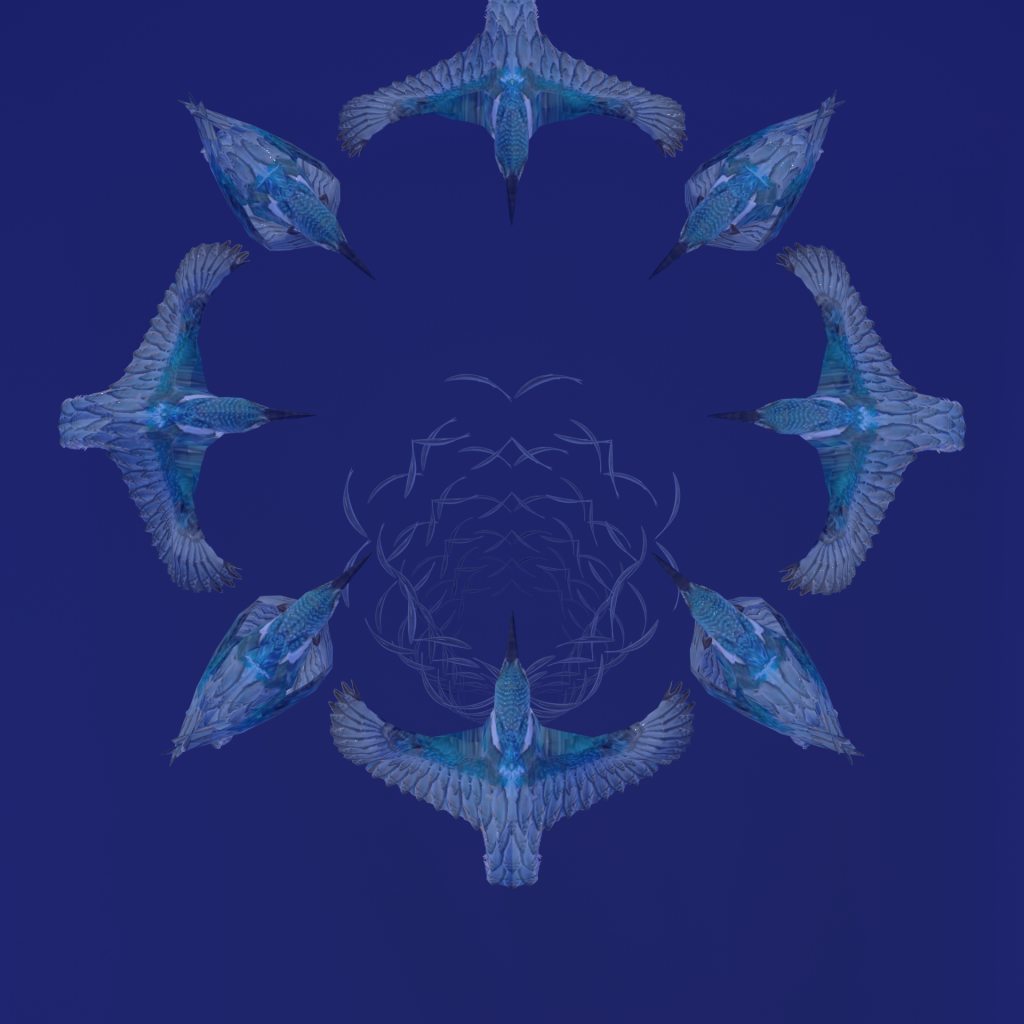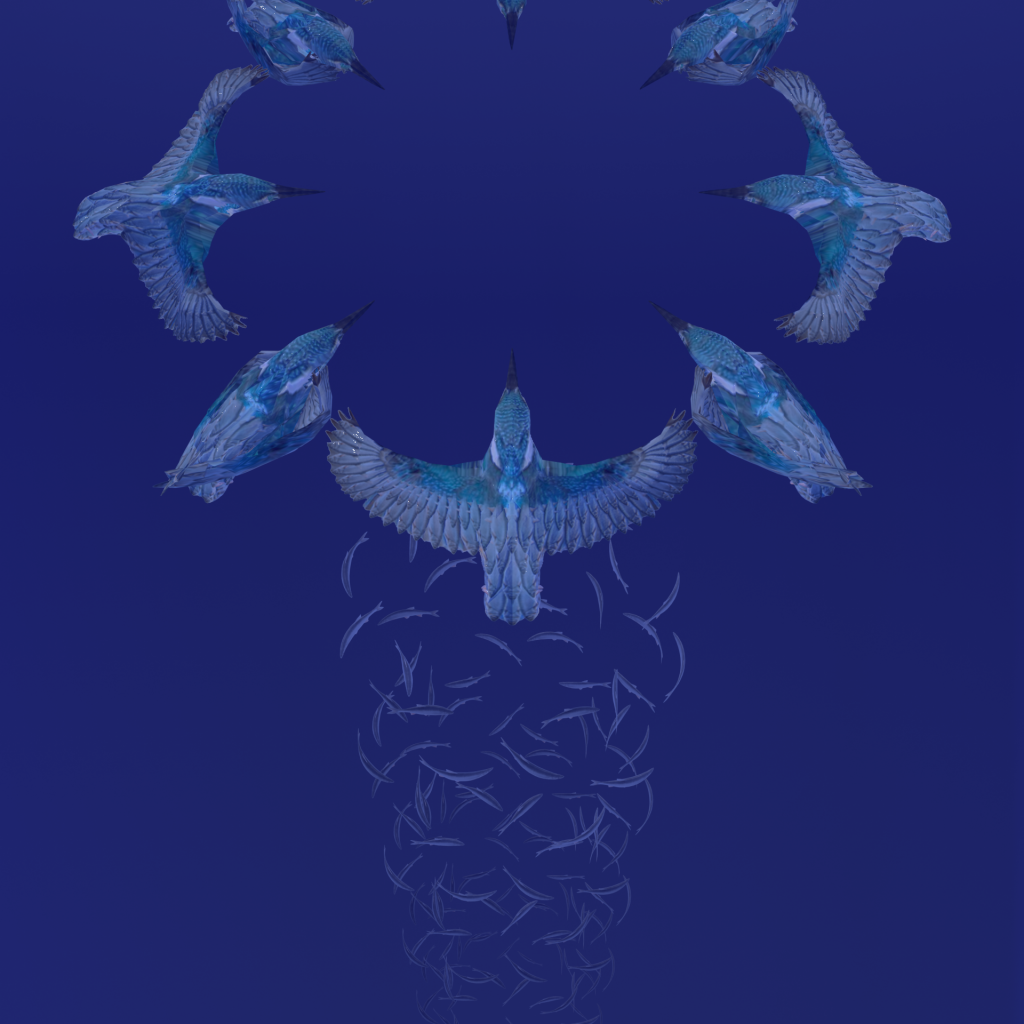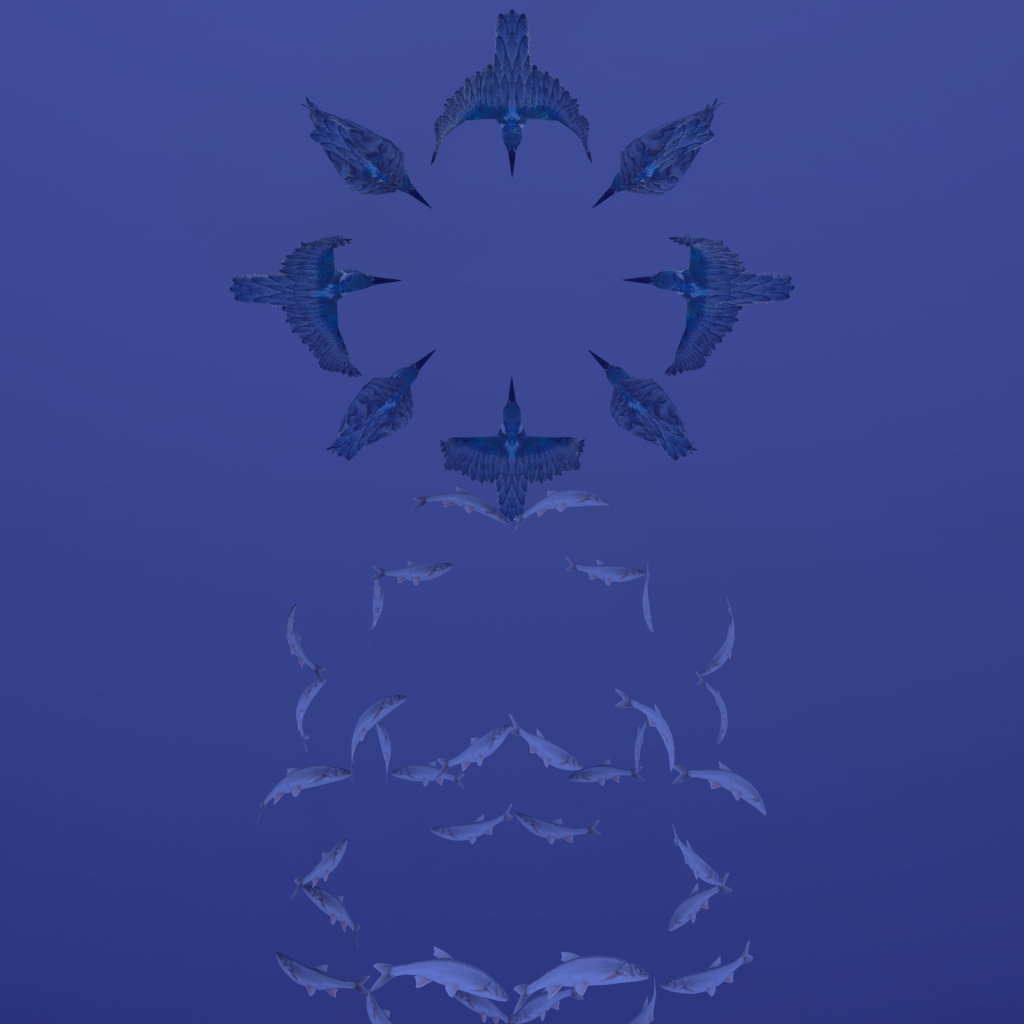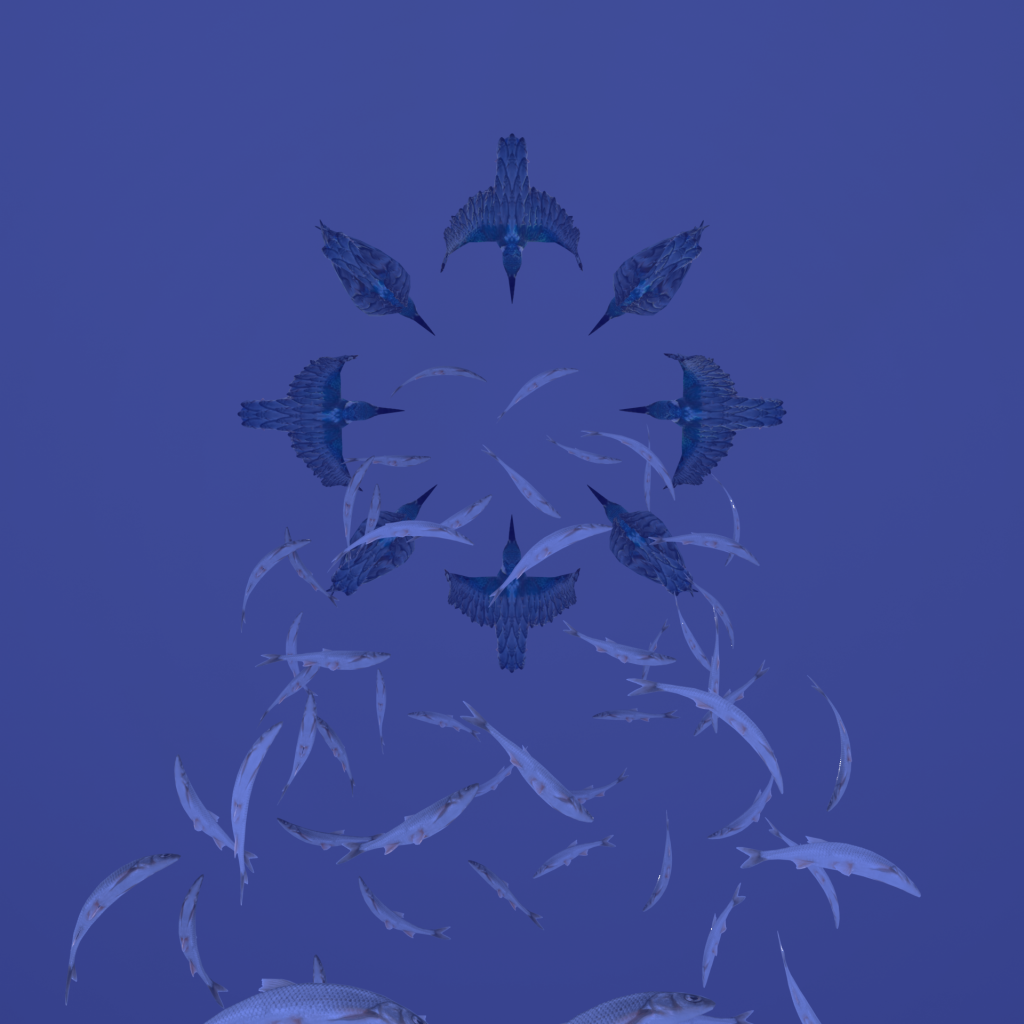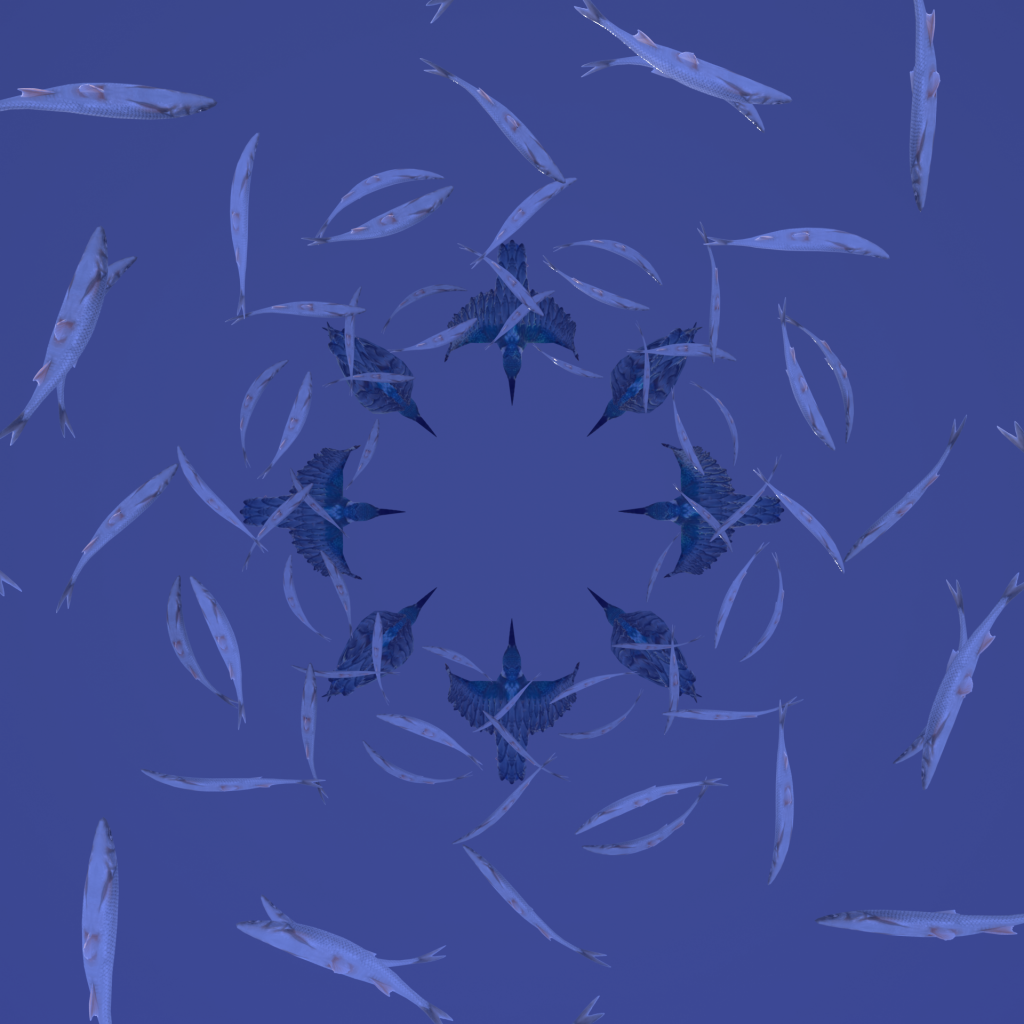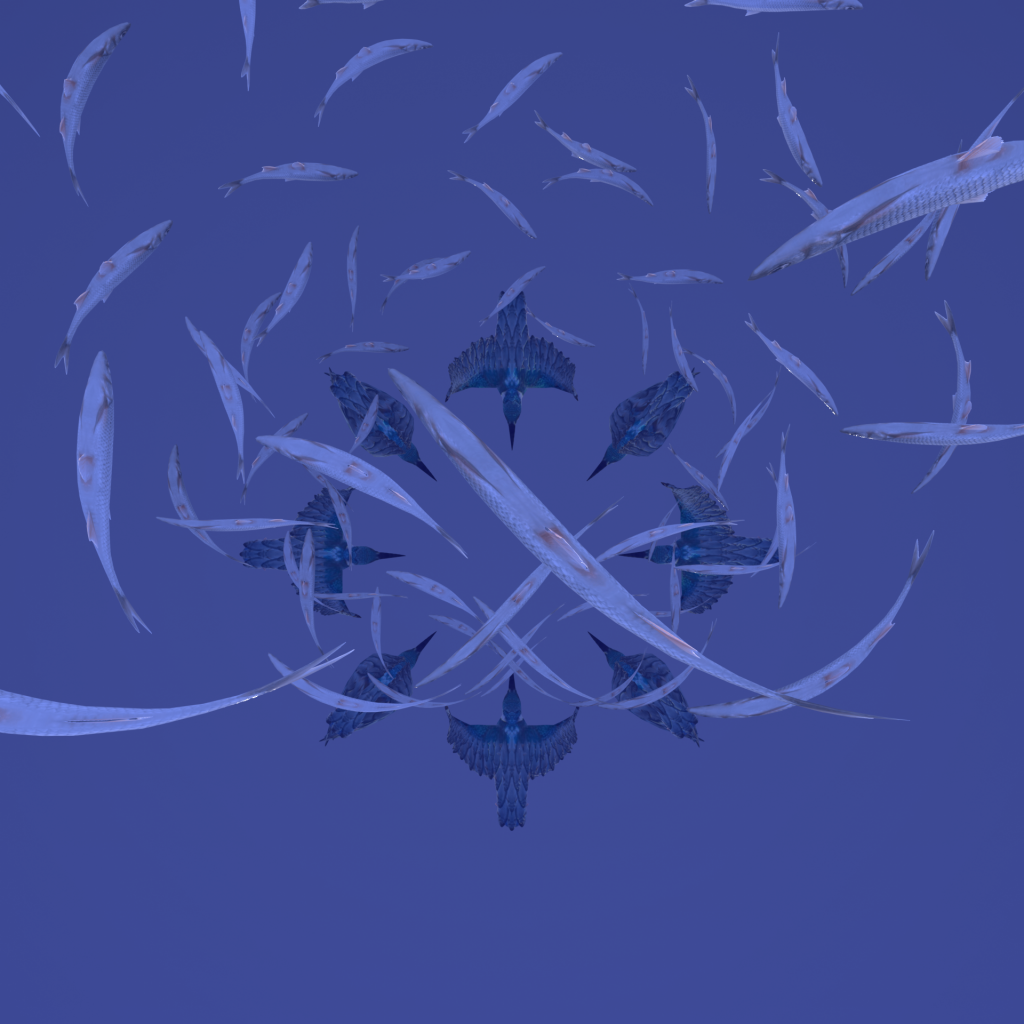“The Fish and the Fisher’, McDonnell, 2021.
In response to Prompt 3.
‘In this prompt you will directly address a contemporary issue in practice by realizing a design outcome which responds to a reading on the topic.
Start by choosing a reading. (The) challenge in this prompt is to enter into a dialogue with this reading through making. How you approach this will be unique to the reading and discourse you are entering. You may choose to exemplify the reading, challenge it, deconstruct it, etc. It is important to conduct multiple readings of the text and highly encouraged that you are able to discuss the readings with others who are familiar with it.’
Prompt 3 GSMD-500-F031-2021
In response to the prompt, I have chosen a primary piece of text,
‘ A Foreshadowing of 21st Century Art. The Colour and Geometry of Very Early Turkish Carpets,’ by Christpher Alexander, Oxford University Press, 1993.
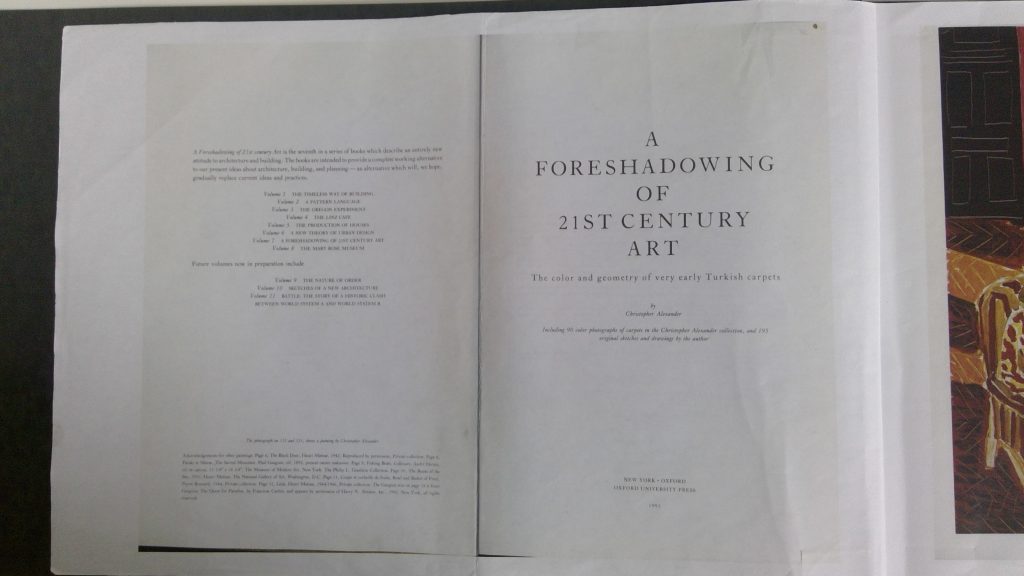
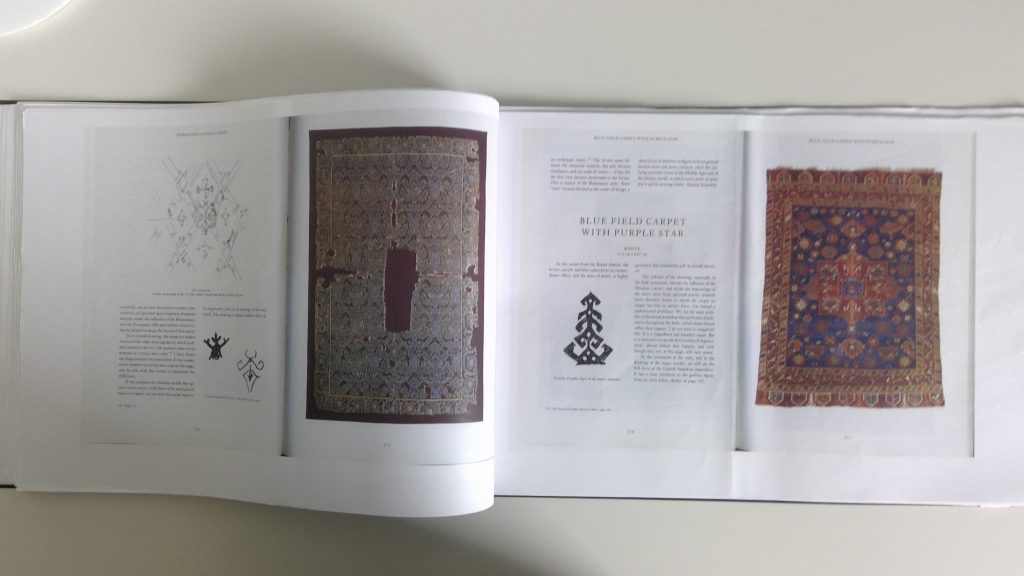
The text (see images above) by Alexander, is a detailed analyses of the deign structures and forms of early 15th and 16th century Turkish carpets. Alexander argues that the carpets, depicted in exquisite detail in the book and coming predominantly from Alexander’s private collection, are the result of a search to express the ‘wholeness’ or ‘oneness’ of the universe. Alexander lays out a series of his own observations about how this quality of ‘wholeness’ is created in these carpets.
The text is clearly written, and provides great detail and insight into the complex and sophisticated structures generating the carpet patterns. The book contains many hand-drawn sketches by Alexander, in which the author, deconstructs specific aspects of each carpet.
To paraphrase, Alexander argues that these patterns are governed primarily by the following concepts; ‘Multiplicity of Centers,’ ‘Local Symmetries,’ ‘Density of Symmetries,’ ‘Positive Space,’ ‘Levels of Scale,’ ‘Differentiation,’ and the ‘Role and Character of Animals.’
These concepts are too detailed in discuss in any detail in this blog, however they represent the ‘scaffold,’ used to create the response piece to prompt 3, see above ‘The Fish and the Fisher,’ McDonnell, 2021.
In response to the prompt, I have also chosen two secondary a pieces of inspiration;
- ‘Sky and Water II’ 1938, M. C. Escher
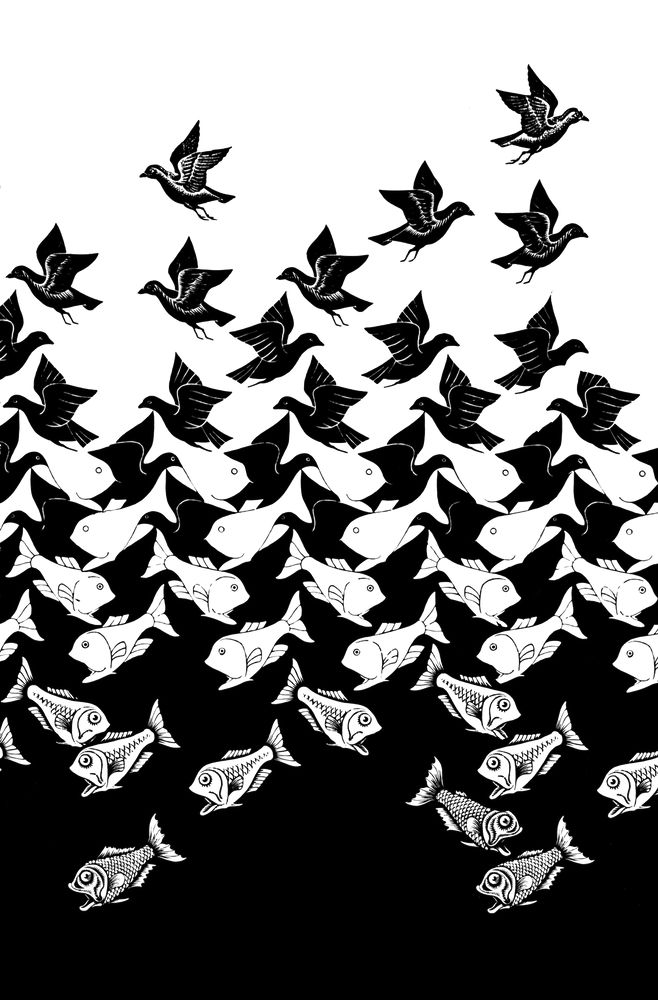
2. An excerpt from ‘Falling into Grace’ by Adyashanti.
‘The Great spiritual teacher Krishnamurti once said, “When you teach a child that a bird is named ‘bird,’ the child will never see the bird again.” What they’ll see is the word ‘bird.’ That’s what they’ll see and feel, and when they look up in the sky and see that strange, winged being take flight, they’ll forget that what is actually there is a great mystery. They’ll forget that they really don’t know what it is. They’ll forget that the thing flying through the sky is beyond all words, it’s an expression of the immensity of
life. It’s actually an extraordinary and wondrous thing that flies through the sky. But as soon as we name it, we think we know what it is. We see ’bird,’ and we discount it. A ‘bird,’ ‘cat,’ ‘dog,’ ‘human,’ ‘cup,’ ‘chair,’ ‘forest’ – all of these things have been given names, and all of these things lose some of their natural aliveness once we name them.’
‘Falling into Grace’, Adyashanti,
Sounds True, 2011
In both pieces, the print and the text, an attempt is made to express the ‘wholeness’ of things, similar to the carpets discussed in the primary text. Both pieces were inspirational for the prompt response.
I find the print by M. C. Escher to be a particularly powerful attempt to express the ‘non-dualist’ relationship between the fish and the bird. Notice how the forms elude to, or even create, the ‘choppiness’ of the water’s surface.
In the text by Adyashanti, the magic, hidden by the word ‘bird,’ jumps to the surface of the page. I find it a compelling expression of the intense beauty of the natural world.
Based on the above sources and a daily practice, as described in prompt 2, I then set out to make a contemporary response. One grounded in my personal ‘understanding’ of the natural world and its patterns.
For this response, as a starting point, I have chosen the relationship between the Fisher and the Fish, a piece of which is caught in the video at the start of the prompt 2 response.
Below are the initial sketches used to develop the piece. Throughout, is an attempt to implement the generative sources of ‘wholeness’ or ‘oneness’ described in Alexander’s book, while drawing inspiration from M. C. Escher’s print and the text of Adyashanti.
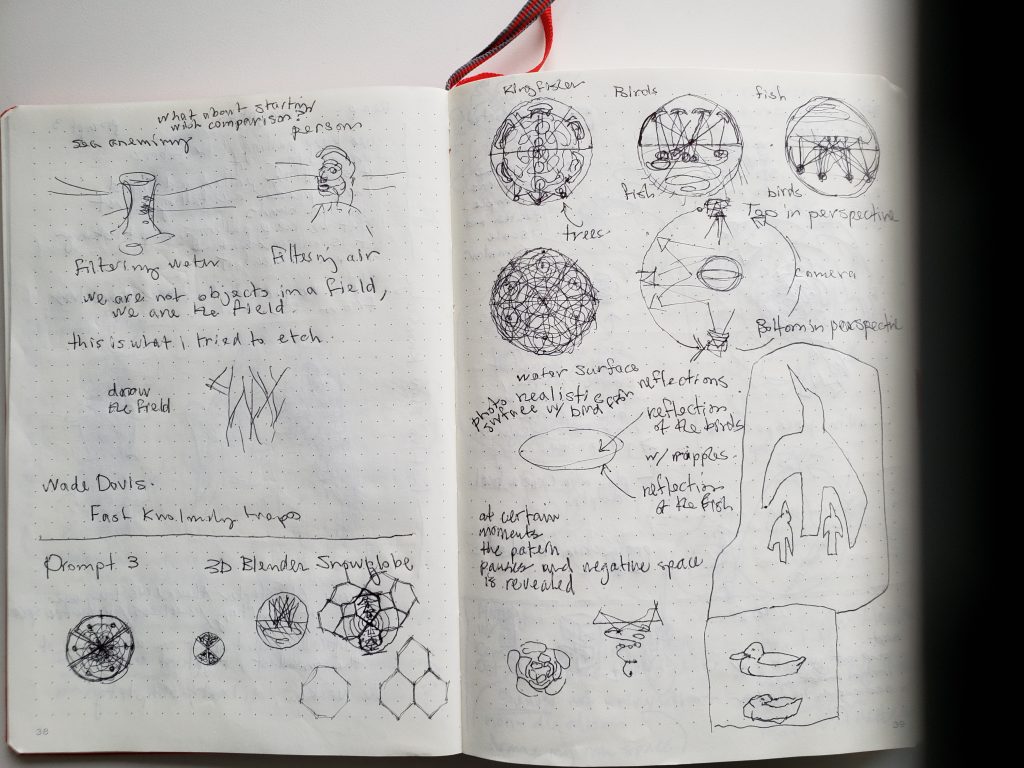
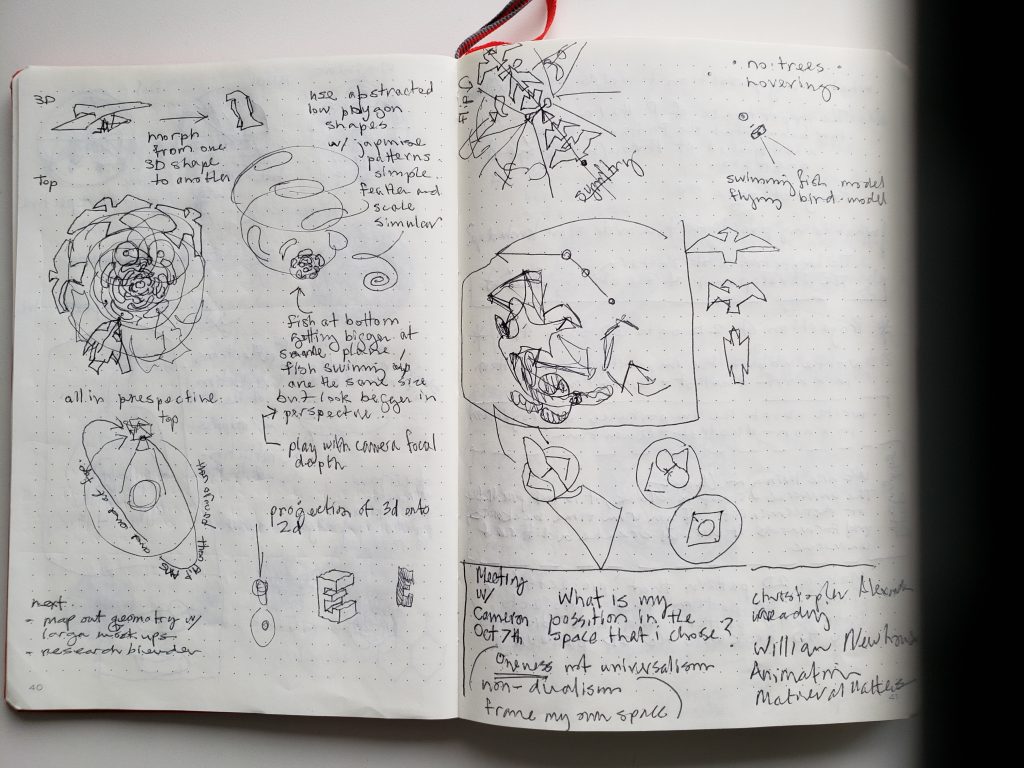
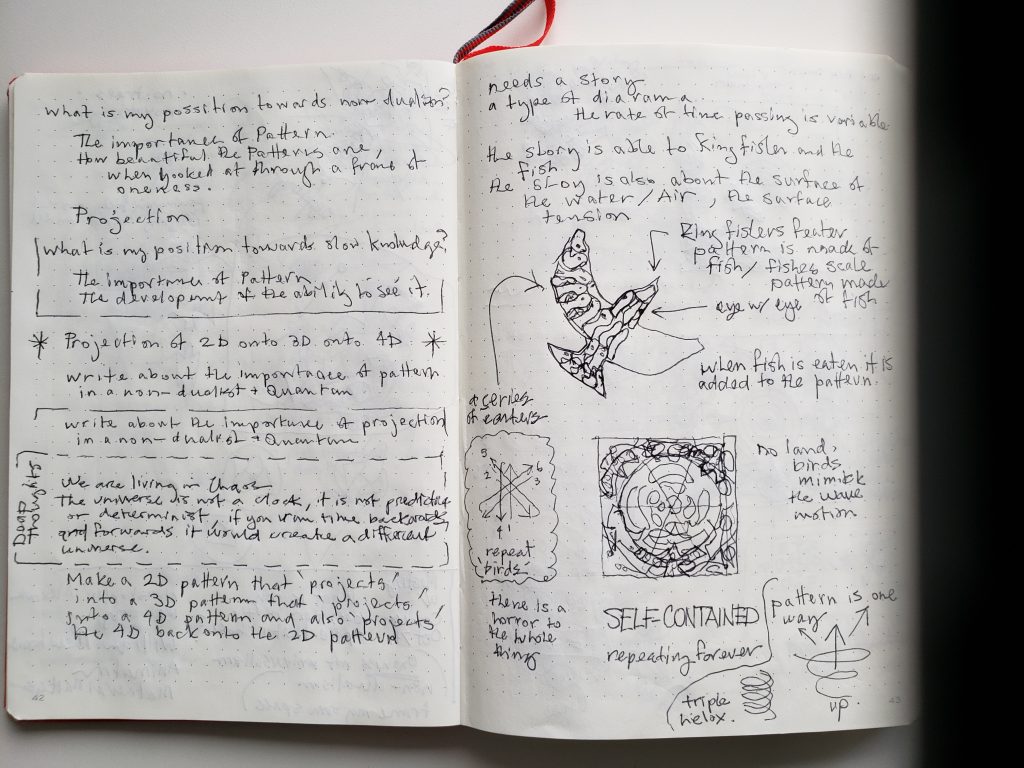


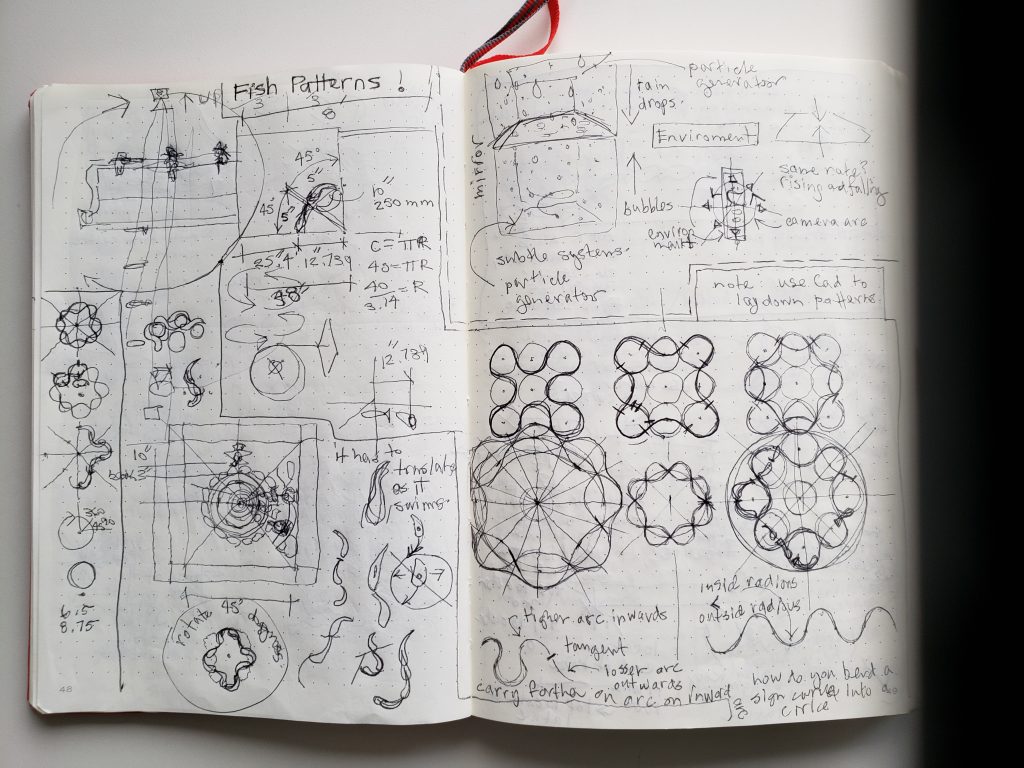

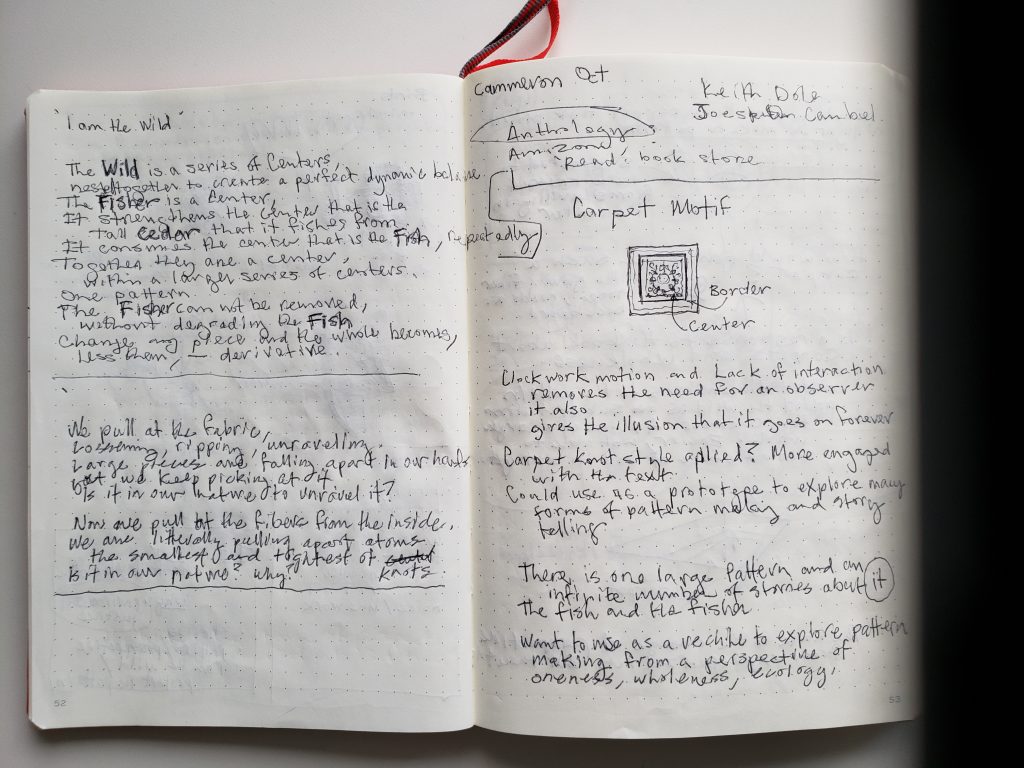
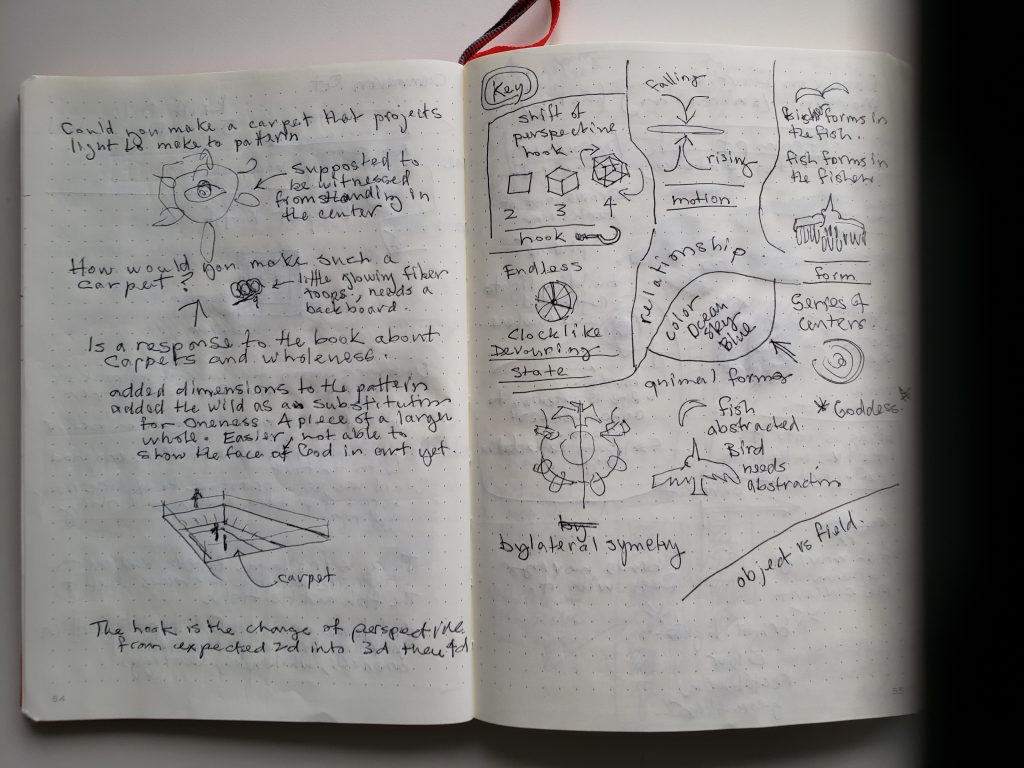
18 pages of Original Sketches and Studies for the ‘Fish and the Fisher,’ McDonnell, 2021.
Below are generative drawings, developed in CAD, to describe the motion of the Fish form or actor. Overall, an attempt is made throughout to project a two dimensional pattern into three and four (time) dimensions.
This shifting from the two dimensional inspirational pieces to a four dimensional response is important. The reasons for this are not yet clear to me but revolve around an attempt to make a contemporary response, not a derivative copy. But there is more to this as well. The shifting, projecting and collapsing of dimensional representation in the response, hints at a deeper unconscious understanding of natural patterns and how to depict them in ways that resonate the ‘oneness’ or ‘wholeness’ underneath.
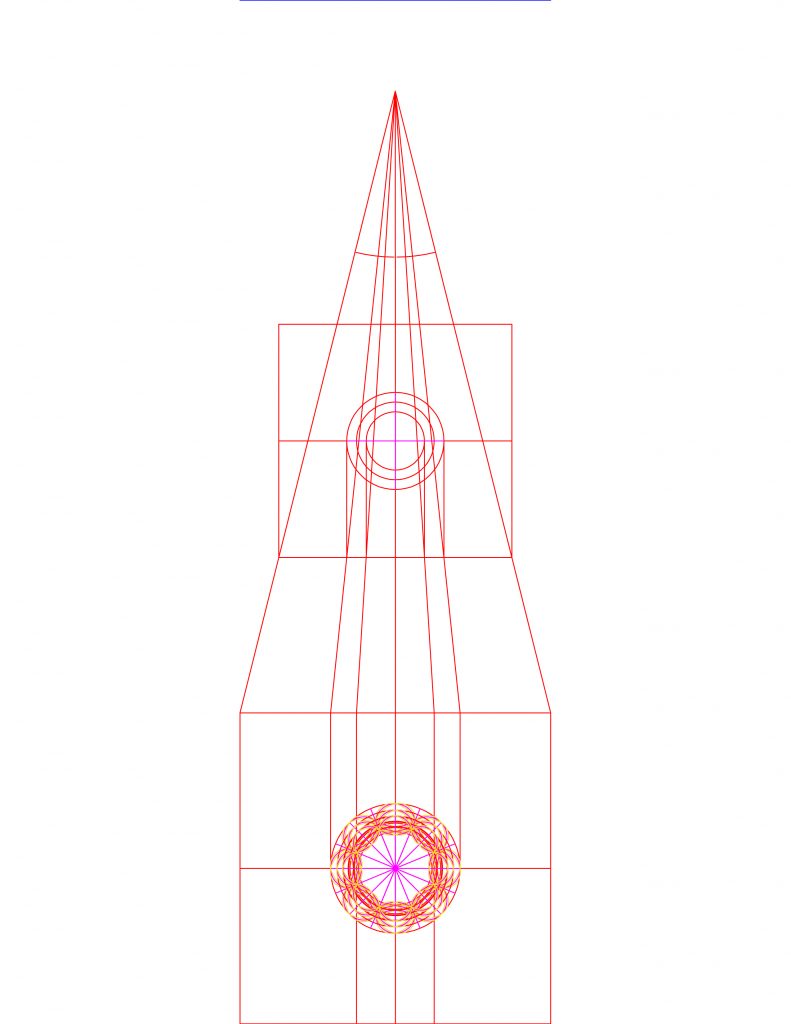
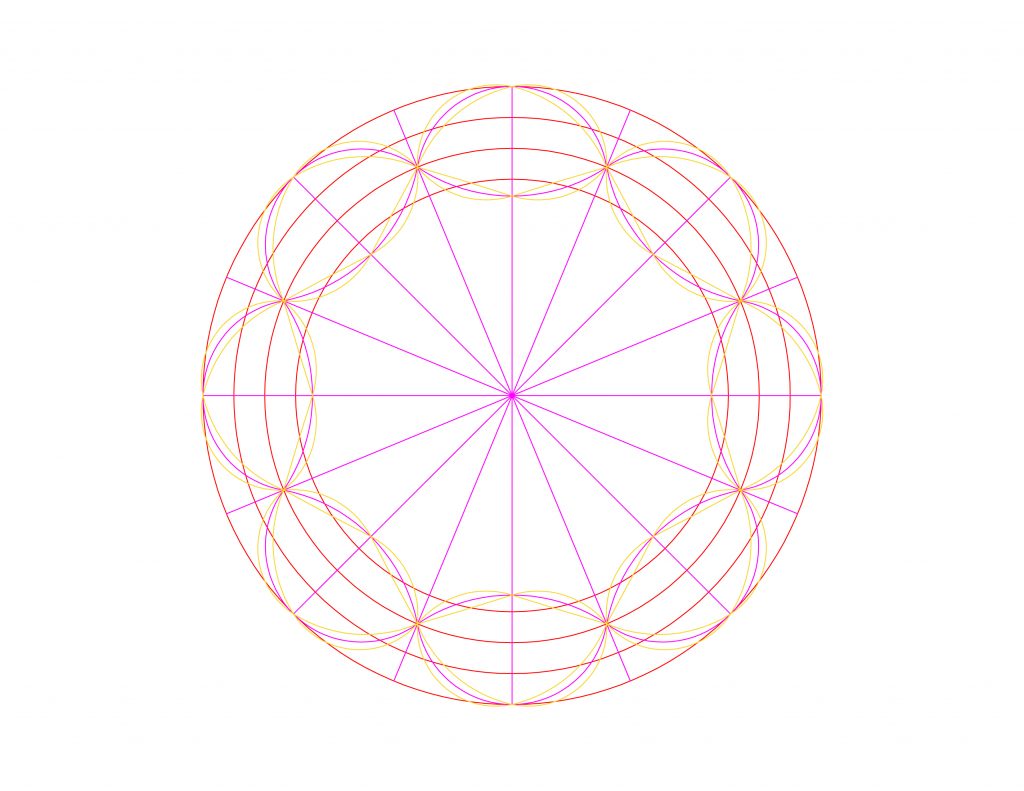

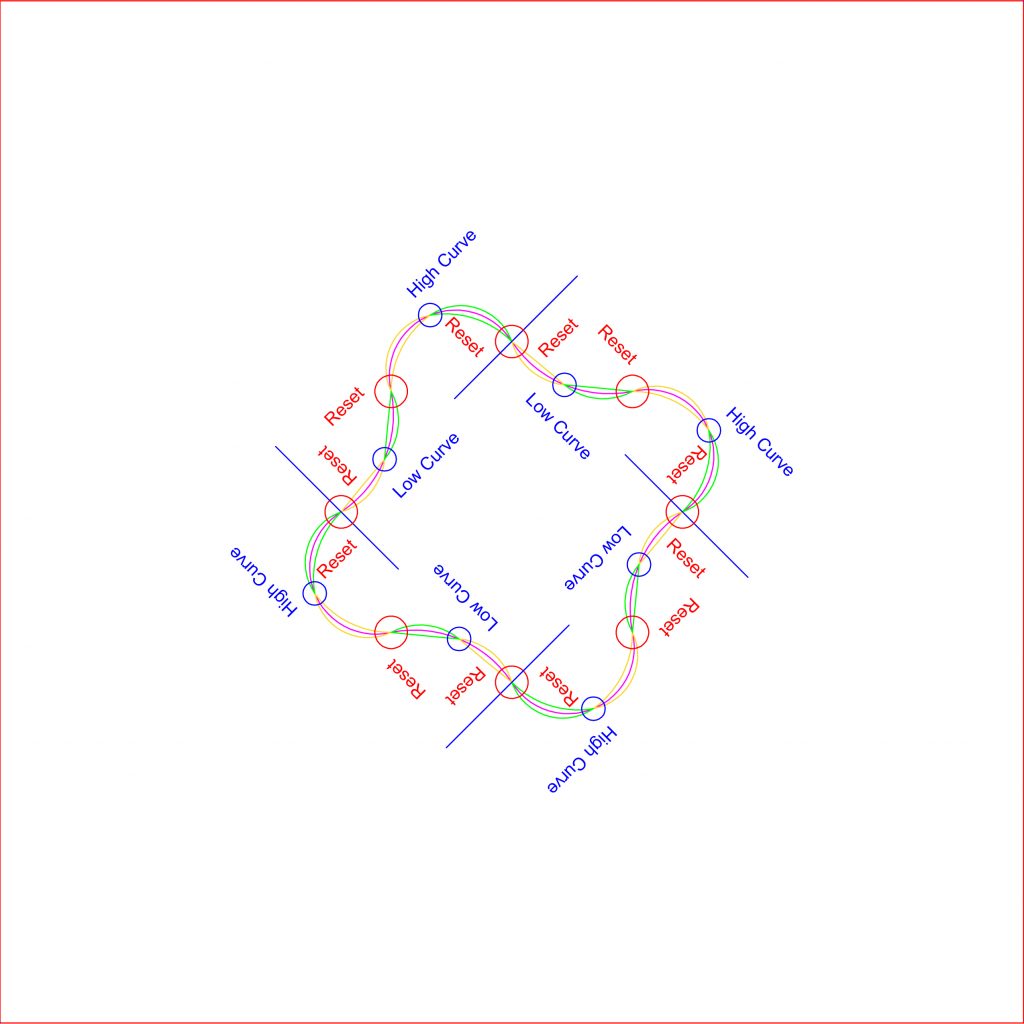


It was important to me that the design be generative. That is, that it be the complex results of the interactions of two simple actors. Below is a tiling of frames from the prompt response video ‘The Fish and the Fisher.’ Notice how detailed the pattern becomes through the interactions of two simple actors.

Other attempts were made at expressing the intent behind the chosen inspirational text. Below is a detail of the ‘Fisher’ actor in the video response. Notice how the feathers are made of fish. The image also contains a ‘goddess’ figure, as described by Alexander, in the center, directly above the fisher’s head.
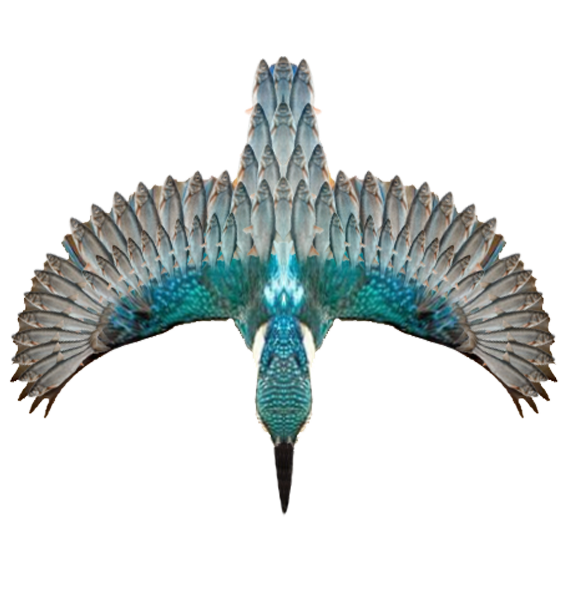
Below are plates developed from the video response.
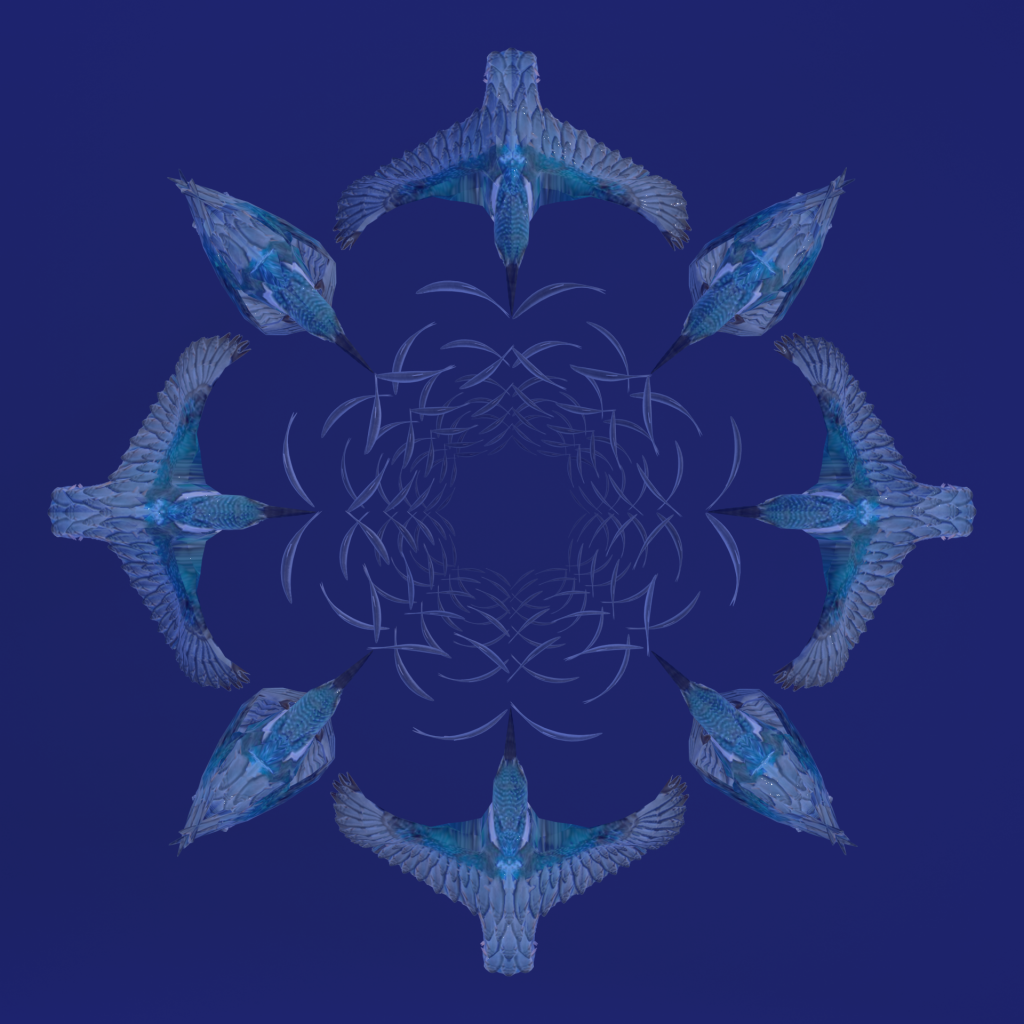
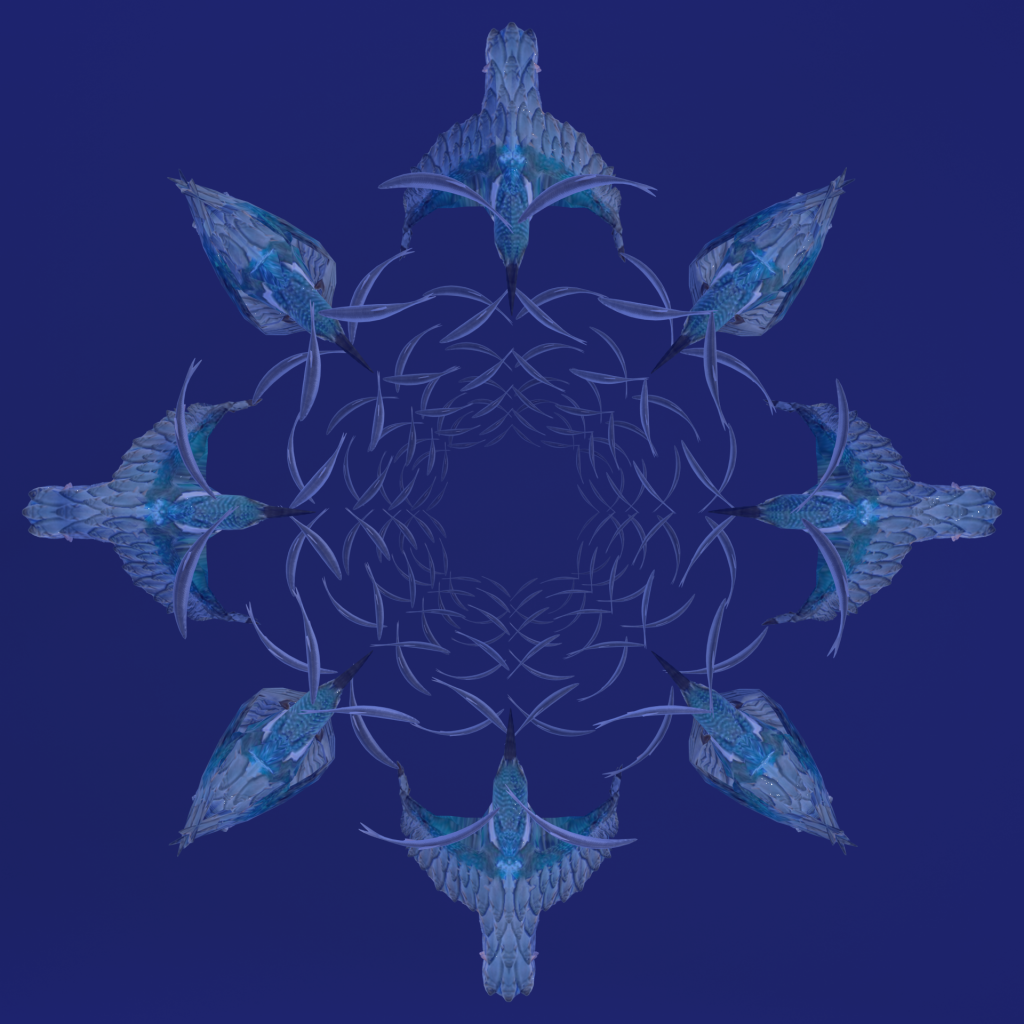
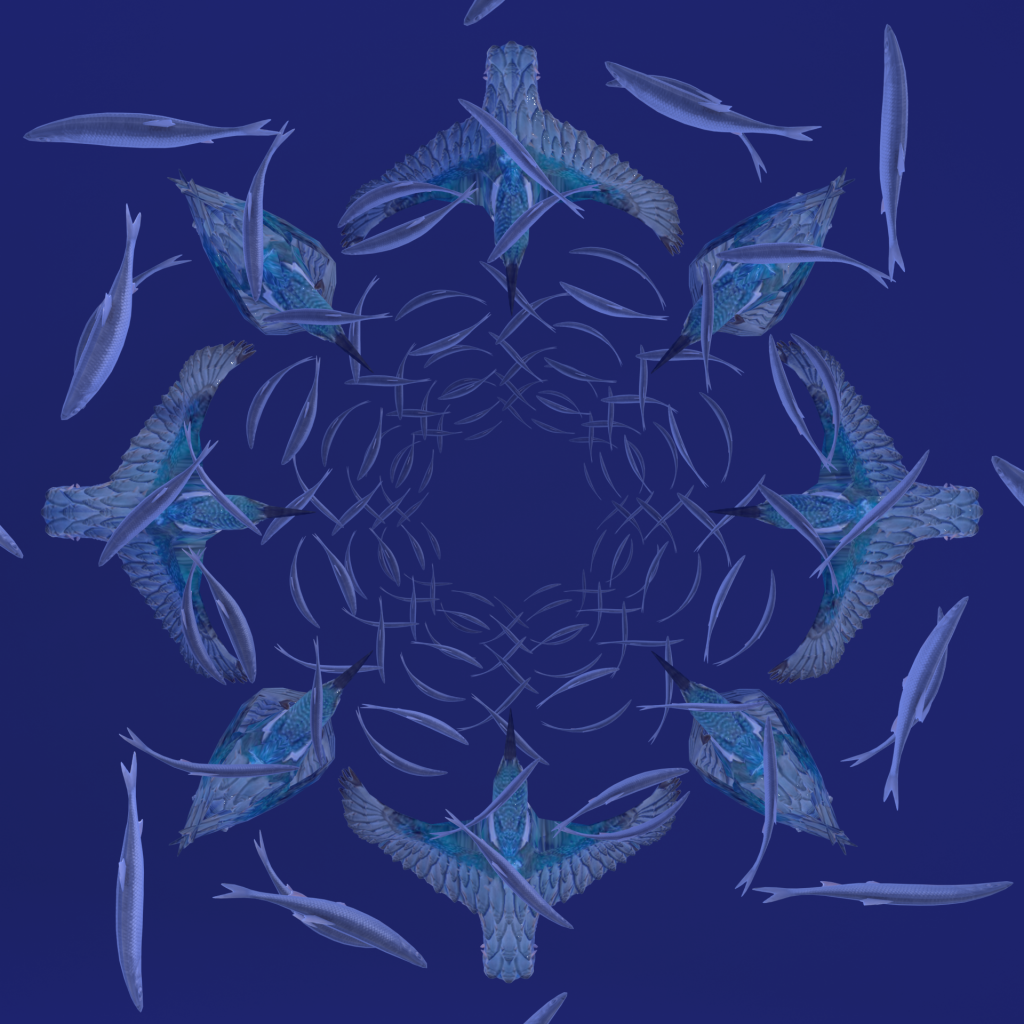
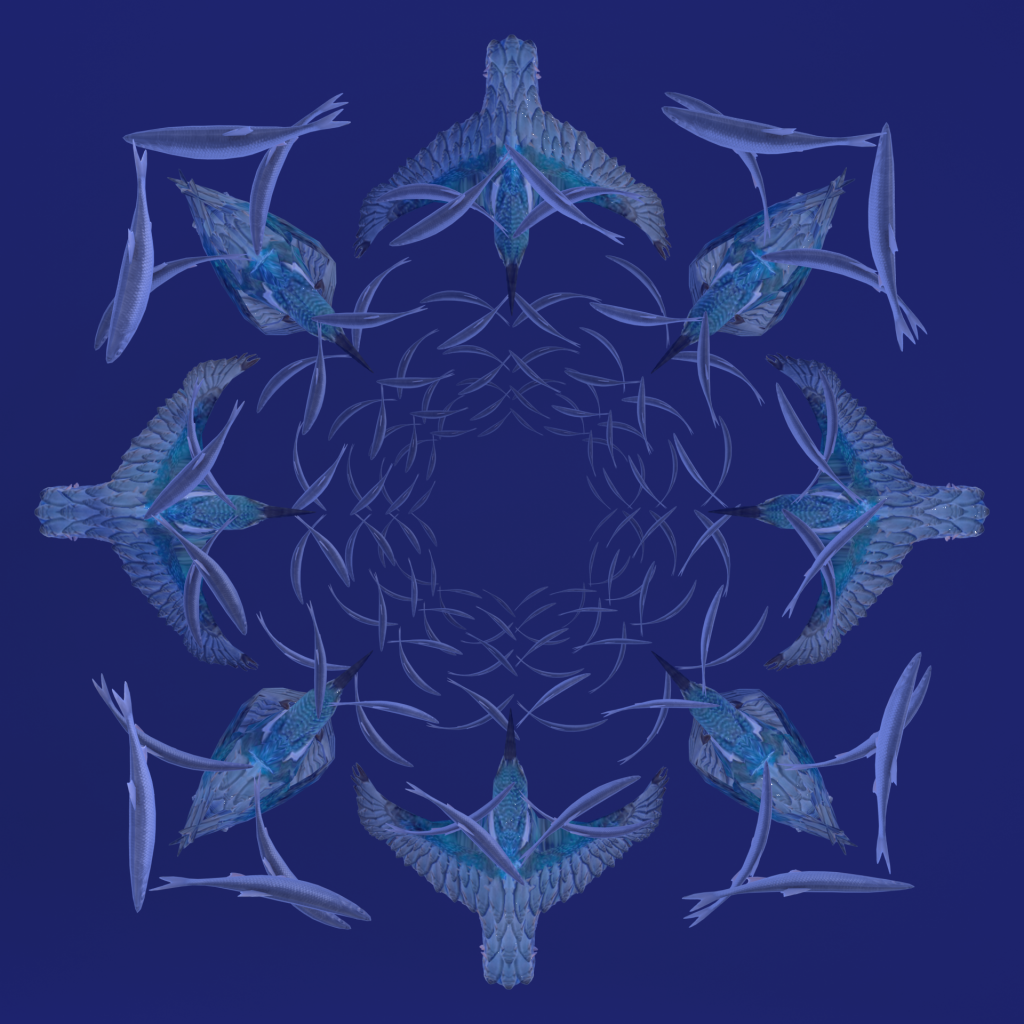
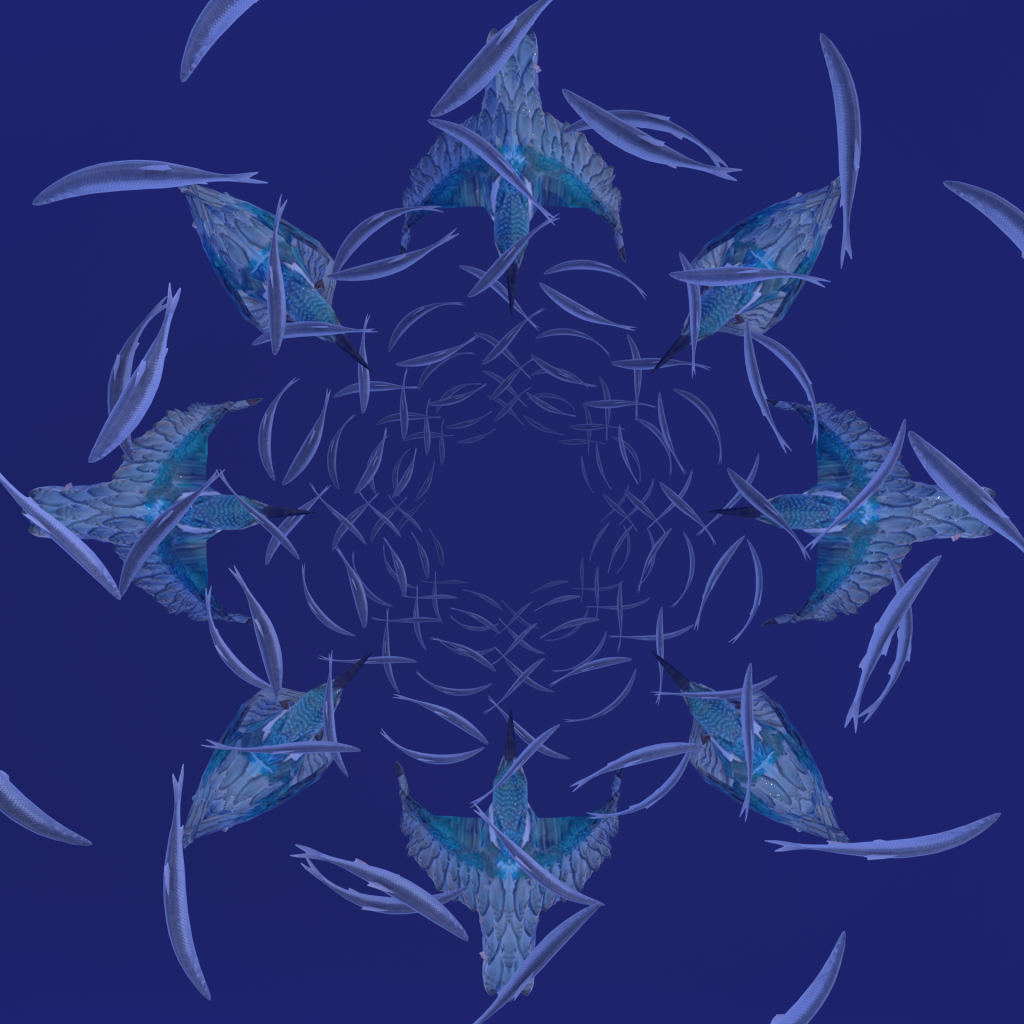
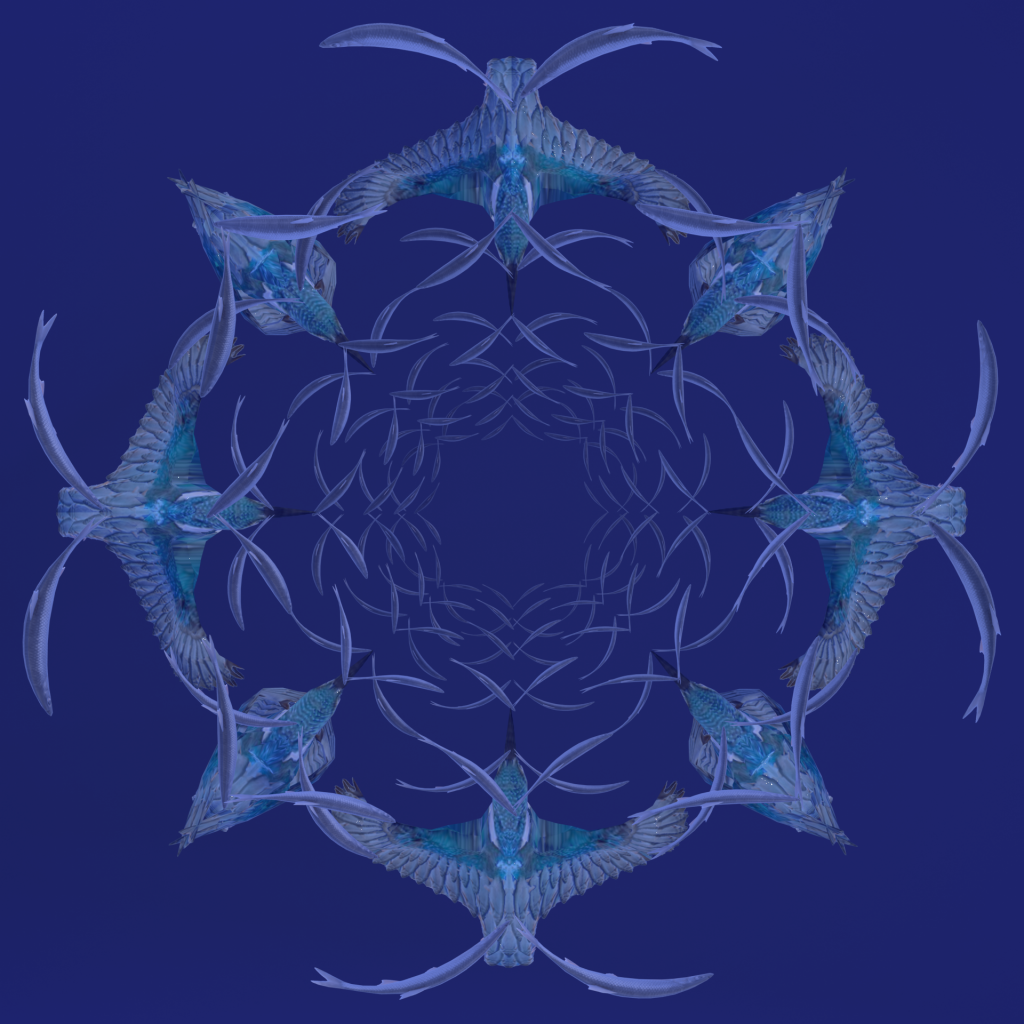

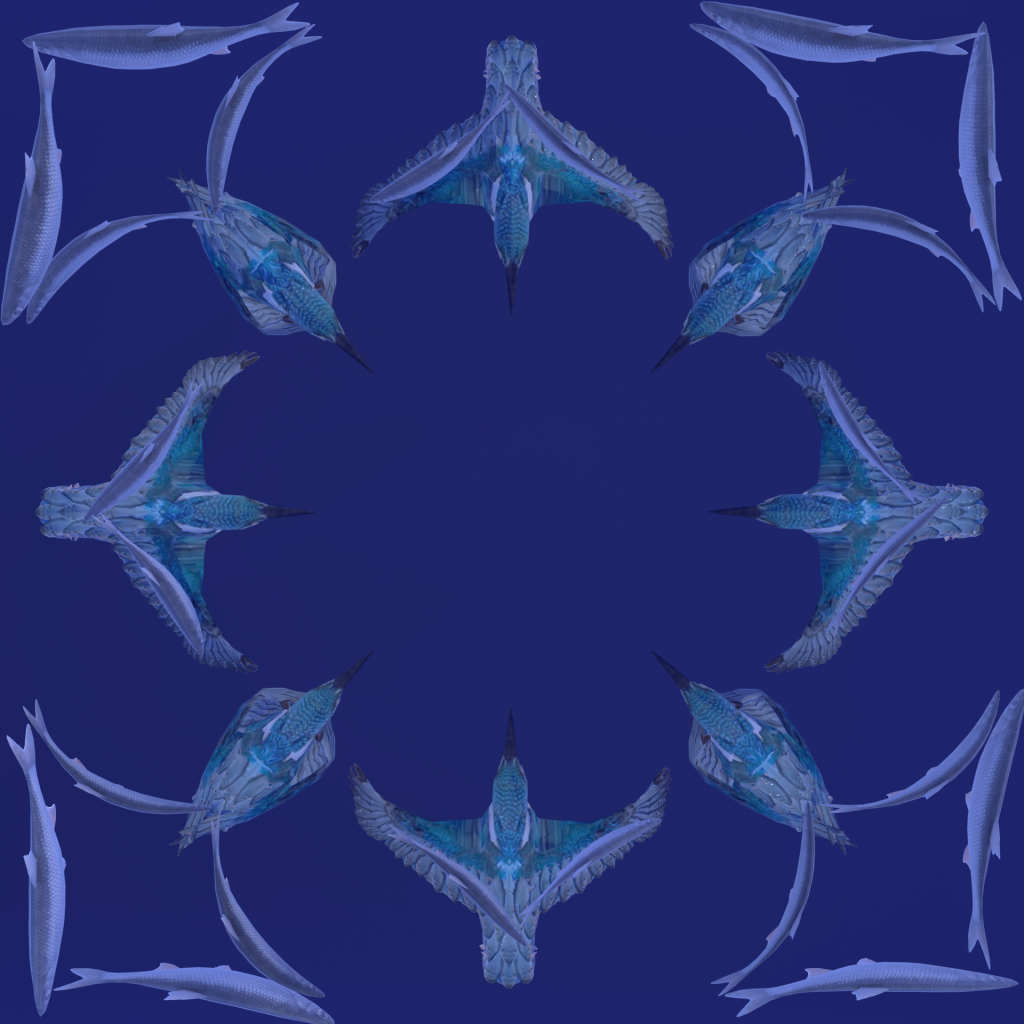
Lastly, I have included some stills from a secondary response piece. In these stills, the perspective is shifted to reveal the three dimensional nature of the Fish and Fisher’s relationship.
